Saeid Hosseini
Emulating the Human Mind: A Neural-symbolic Link Prediction Model with Fast and Slow Reasoning and Filtered Rules
Oct 21, 2023Abstract:Link prediction is an important task in addressing the incompleteness problem of knowledge graphs (KG). Previous link prediction models suffer from issues related to either performance or explanatory capability. Furthermore, models that are capable of generating explanations, often struggle with erroneous paths or reasoning leading to the correct answer. To address these challenges, we introduce a novel Neural-Symbolic model named FaSt-FLiP (stands for Fast and Slow Thinking with Filtered rules for Link Prediction task), inspired by two distinct aspects of human cognition: "commonsense reasoning" and "thinking, fast and slow." Our objective is to combine a logical and neural model for enhanced link prediction. To tackle the challenge of dealing with incorrect paths or rules generated by the logical model, we propose a semi-supervised method to convert rules into sentences. These sentences are then subjected to assessment and removal of incorrect rules using an NLI (Natural Language Inference) model. Our approach to combining logical and neural models involves first obtaining answers from both the logical and neural models. These answers are subsequently unified using an Inference Engine module, which has been realized through both algorithmic implementation and a novel neural model architecture. To validate the efficacy of our model, we conducted a series of experiments. The results demonstrate the superior performance of our model in both link prediction metrics and the generation of more reliable explanations.
Transfer-based adaptive tree for multimodal sentiment analysis based on user latent aspects
Jun 27, 2021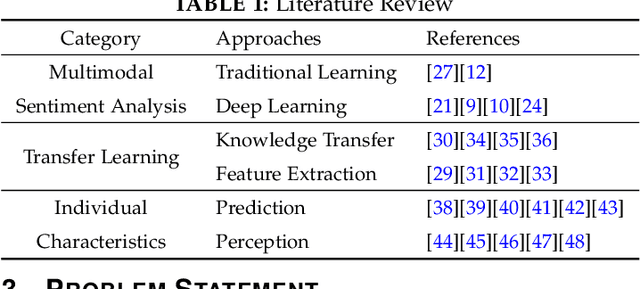
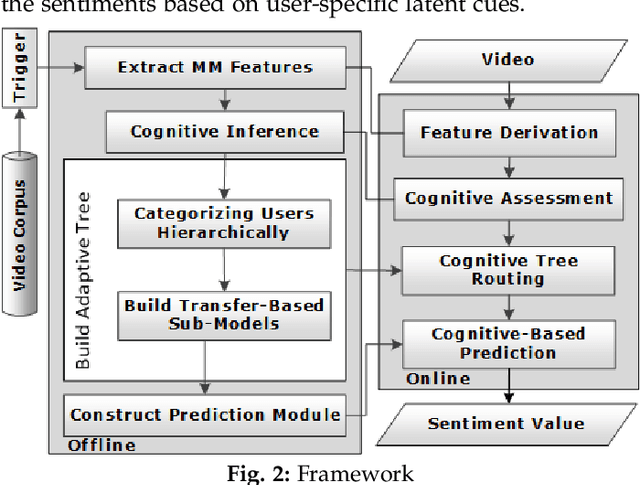

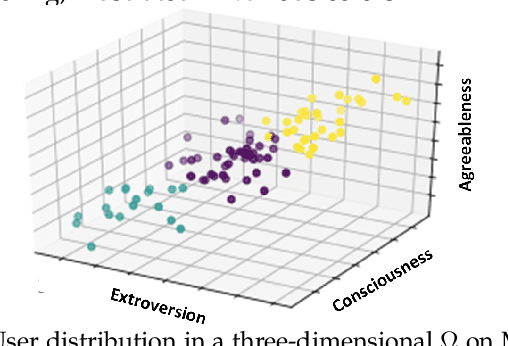
Abstract:Multimodal sentiment analysis benefits various applications such as human-computer interaction and recommendation systems. It aims to infer the users' bipolar ideas using visual, textual, and acoustic signals. Although researchers affirm the association between cognitive cues and emotional manifestations, most of the current multimodal approaches in sentiment analysis disregard user-specific aspects. To tackle this issue, we devise a novel method to perform multimodal sentiment prediction using cognitive cues, such as personality. Our framework constructs an adaptive tree by hierarchically dividing users and trains the LSTM-based submodels, utilizing an attention-based fusion to transfer cognitive-oriented knowledge within the tree. Subsequently, the framework consumes the conclusive agglomerative knowledge from the adaptive tree to predict final sentiments. We also devise a dynamic dropout method to facilitate data sharing between neighboring nodes, reducing data sparsity. The empirical results on real-world datasets determine that our proposed model for sentiment prediction can surpass trending rivals. Moreover, compared to other ensemble approaches, the proposed transfer-based algorithm can better utilize the latent cognitive cues and foster the prediction outcomes. Based on the given extrinsic and intrinsic analysis results, we note that compared to other theoretical-based techniques, the proposed hierarchical clustering approach can better group the users within the adaptive tree.
Cognitive-aware Short-text Understanding for Inferring Professions
Jun 04, 2021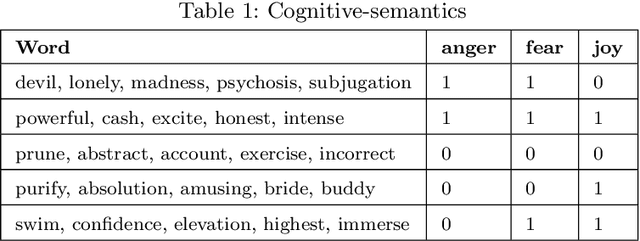
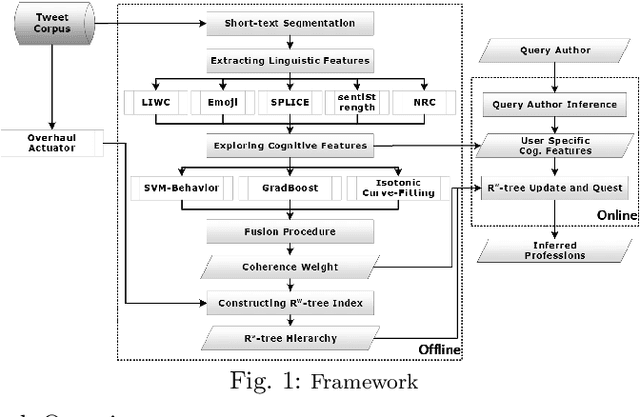
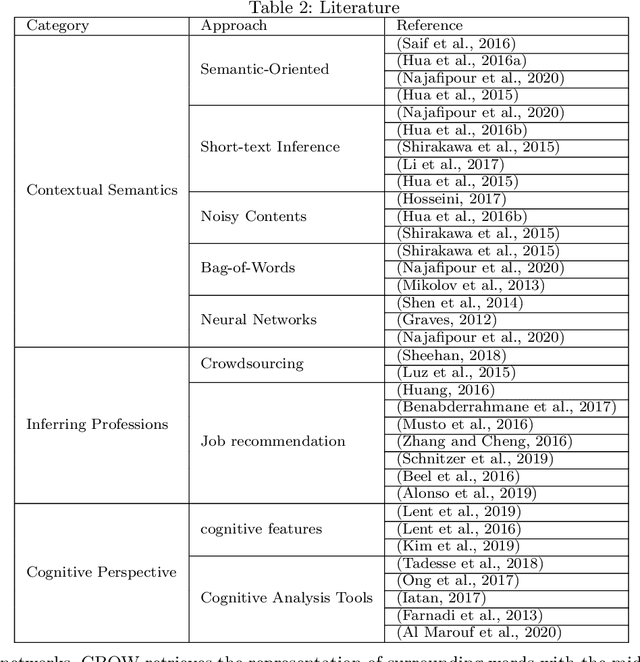
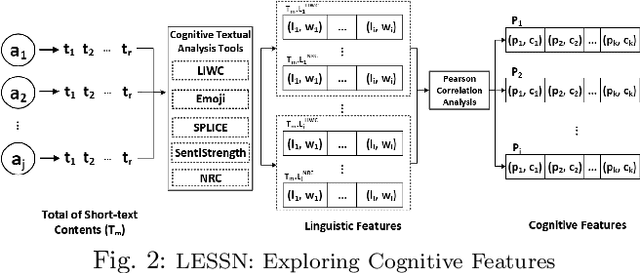
Abstract:Leveraging short-text contents to estimate the occupation of microblog authors has significant gains in many applications. Yet challenges abound. Firstly brief textual contents come with excessive lexical noise that makes the inference problem challenging. Secondly, cognitive-semantics are not evident, and important linguistic features are latent in short-text contents. Thirdly, it is hard to measure the correlation between the cognitive short-text semantics and the features pertaining various occupations. We argue that the multi-aspect cognitive features are needed to correctly associate short-text contents to a particular job and discover suitable people for the careers. To this end, we devise a novel framework that on the one hand, can infer short-text contents and exploit cognitive features, and on the other hand, fuses various adopted novel algorithms, such as curve fitting, support vector, and boosting modules to better predict the occupation of the authors. The final estimation module manufactures the $R^w$-tree via coherence weight to tune the best outcome in the inferring process. We conduct comprehensive experiments on real-life Twitter data. The experimental results show that compared to other rivals, our cognitive multi-aspect model can achieve a higher performance in the career estimation procedure, where it is inevitable to neglect the contextual semantics of users.
EmoDNN: Understanding emotions from short texts through a deep neural network ensemble
Jun 03, 2021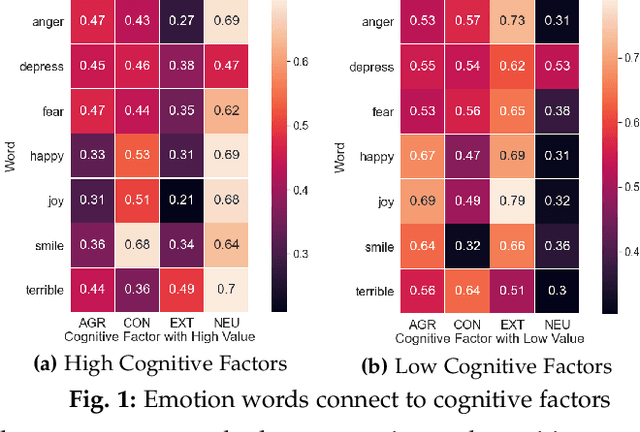

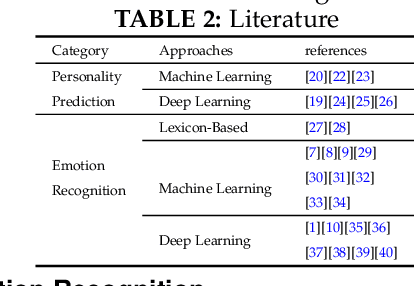

Abstract:The latent knowledge in the emotions and the opinions of the individuals that are manifested via social networks are crucial to numerous applications including social management, dynamical processes, and public security. Affective computing, as an interdisciplinary research field, linking artificial intelligence to cognitive inference, is capable to exploit emotion-oriented knowledge from brief contents. The textual contents convey hidden information such as personality and cognition about corresponding authors that can determine both correlations and variations between users. Emotion recognition from brief contents should embrace the contrast between authors where the differences in personality and cognition can be traced within emotional expressions. To tackle this challenge, we devise a framework that, on the one hand, infers latent individual aspects, from brief contents and, on the other hand, presents a novel ensemble classifier equipped with dynamic dropout convnets to extract emotions from textual context. To categorize short text contents, our proposed method conjointly leverages cognitive factors and exploits hidden information. We utilize the outcome vectors in a novel embedding model to foster emotion-pertinent features that are collectively assembled by lexicon inductions. Experimental results show that compared to other competitors, our proposed model can achieve a higher performance in recognizing emotion from noisy contents.
SoulMate: Short-text author linking through Multi-aspect temporal-textual embedding
Oct 27, 2019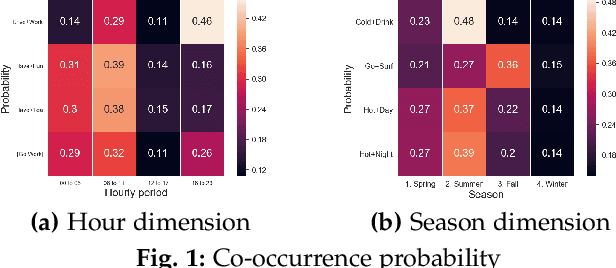

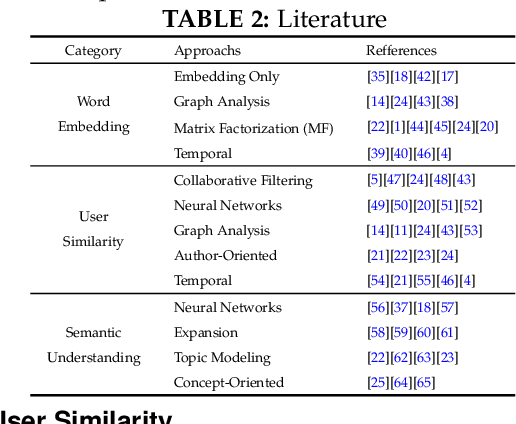
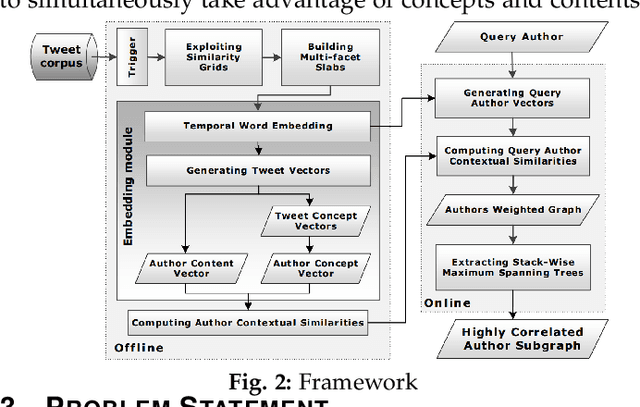
Abstract:Linking authors of short-text contents has important usages in many applications, including Named Entity Recognition (NER) and human community detection. However, certain challenges lie ahead. Firstly, the input short-text contents are noisy, ambiguous, and do not follow the grammatical rules. Secondly, traditional text mining methods fail to effectively extract concepts through words and phrases. Thirdly, the textual contents are temporally skewed, which can affect the semantic understanding by multiple time facets. Finally, using the complementary knowledge-bases makes the results biased to the content of the external database and deviates the understanding and interpretation away from the real nature of the given short text corpus. To overcome these challenges, we devise a neural network-based temporal-textual framework that generates the tightly connected author subgraphs from microblog short-text contents. Our approach, on the one hand, computes the relevance score (edge weight) between the authors through considering a portmanteau of contents and concepts, and on the other hand, employs a stack-wise graph cutting algorithm to extract the communities of the related authors. Experimental results show that compared to other knowledge-centered competitors, our multi-aspect vector space model can achieve a higher performance in linking short-text authors. Additionally, given the author linking task, the more comprehensive the dataset is, the higher the significance of the extracted concepts will be.
TEAGS: Time-aware Text Embedding Approach to Generate Subgraphs
Aug 21, 2019

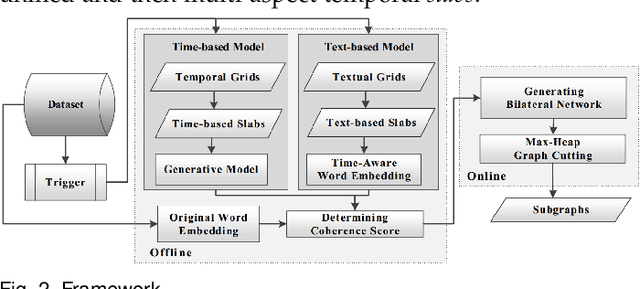

Abstract:Contagions (e.g. virus, gossip) spread over the nodes in propagation graphs. We can use the temporal and textual data of the nodes to compute the edge weights and then generate subgraphs with highly relevant nodes. This is beneficial to many applications. Yet, challenges abound. First, the propagation pattern between each pair of nodes may change by time. Second, not always the same contagion propagates. Hence, the state-of-the-art text mining approaches including topic-modeling cannot effectively compute the edge weights. Third, since the propagation is affected by time, the word-word co-occurrence patterns may differ in various temporal dimensions, that can decrease the effectiveness of word embedding approaches. We argue that multi-aspect temporal dimensions (hour, day, etc) should be considered to better calculate the correlation weights between the nodes. In this work, we devise a novel framework that on the one hand, integrates a neural network based time-aware word embedding component to construct the word vectors through multiple temporal facets, and on the other hand, uses a temporal generative model to compute the weights. Subsequently, we propose a Max-Heap Graph cutting algorithm to generate subgraphs. We validate our model through comprehensive experiments on real-world datasets. The results show that our model can retrieve the subgraphs more effective than other rivals and the temporal dynamics should be noticed both in word embedding and propagation processes.
 Add to Chrome
Add to Chrome Add to Firefox
Add to Firefox Add to Edge
Add to Edge